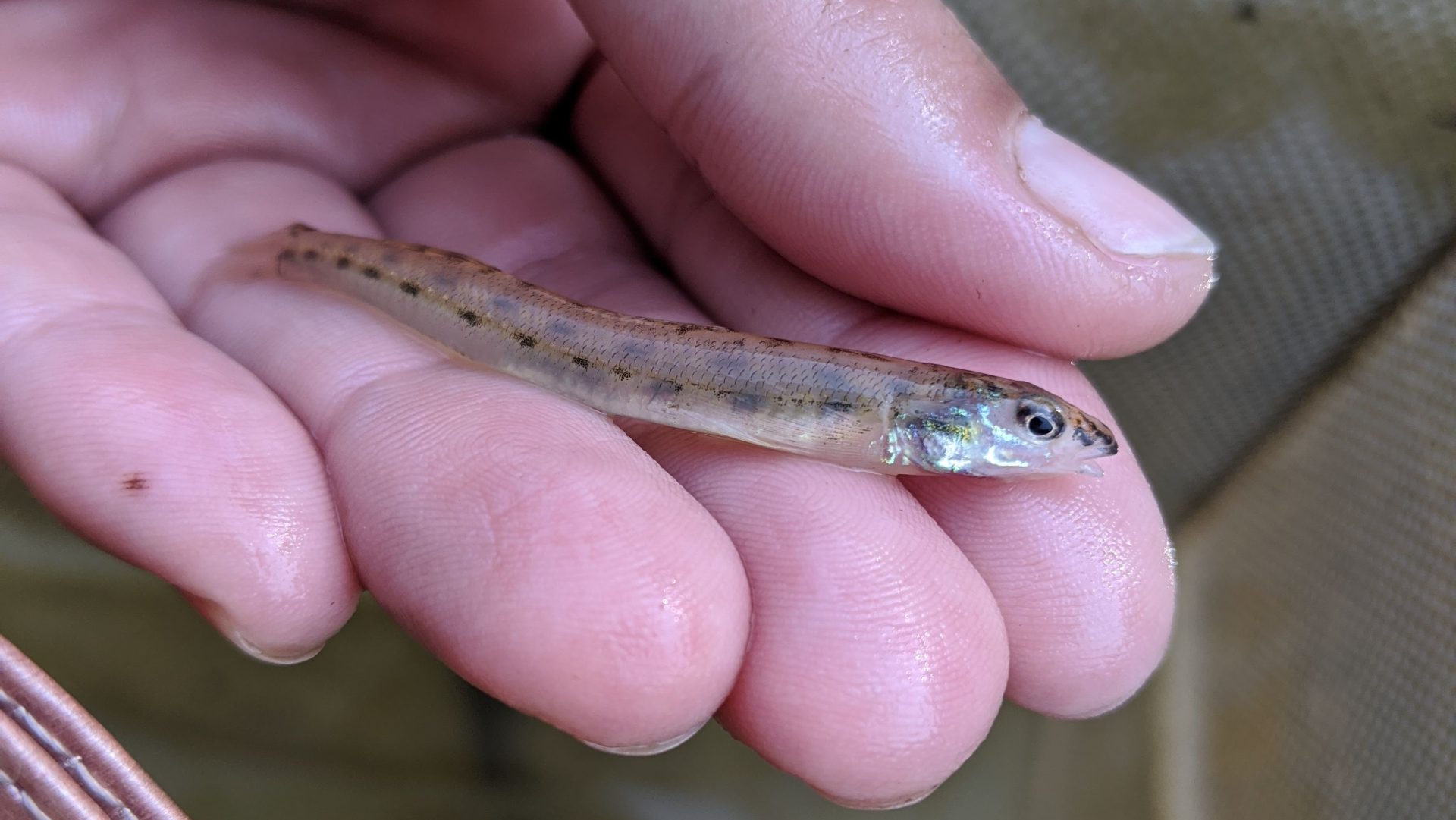Assessing Population Viability of the Eastern Sand Darter in Illinois Running Waters

The Eastern Sand Darter, Ammocrypta pellucida (Agassiz, 1863) was recorded in Illinois by Nelson (1876). In the late 1800’s, A. pellucida referred to the sand darter and was noted to have a very interesting behavior, it buried itself in the sand (see Jordan and Copland 1877 for description of this behavior). Forbes considered A. pellucida to be a principal smaller species of smaller rivers, along with the Banded Darter, Slenderhead Darter, Blackside Darter, Greenside Darter, and Rainbow Darter (Forbes and Richardson 1909). The lectotype identified as “Pleurolepis pellucidus Putnam” was collected from the Black River in Ohio in 1853 by Spencer F. Baird and is in the Smithsonian National Museum of Natural History Division of Fishes collection (Catalog Number: 1311).
The Eastern Sand Darter is currently an Illinois state threatened species, with an S3/S4 rank (Feng 2018) and is a Species in Greatest Conservation Need (Metzke et al 2012). Its national ranking in Canada is imperiled (N2), however it is apparently secure at the US Federal (N2) and global level (G4) (NatureServe 2019). It is found in North America in the Great Lakes, the Ohio River drainage, and the St. Lawrence River drainage. Eastern Sand Darters are habitat specialists and need a mostly sandy substrate, and are usually detected in shallow waters, with low water velocity. In Illinois, Eastern Sand Darters have been historically detected in the Wabash, Little Wabash, Embarras, and Vermilion (Wabash) river basins, which are all a part of the greater Ohio River drainage. However, it has not been detected in the Wabash or Little Wabash rivers (Henry et al. 2009) for several years.
Eastern Sand Darters in Illinois have their most detected population in the Embarras River. We identified survey sites, and visited 35 sites over a two year period as shown below.

Field surveys included:
-
- Seining to sample the darter community
- Species ID and count
- Length and weight
- Scale and tissue samples were collected from Eastern Sand Darters

Example of fish processing on a bank of the Vermillion River.
- Habitat data
- Flow
- Depth
- Wetted width
- Habitat variables related to in-stream characteristics
- Detailed map of substrate throughout site
- Seining to sample the darter community
-
- Water quality
- Temperature
- Loggers at each site
- Conductivity
- pH
- Orthophosphate (reactive phosphorus)
- Nitrate-nitrogen
- Ammonia-nitrogen
- Dissolved oxygen
- Loggers at select sites
- Water clarity
- Temperature
- Water quality
-
- Substrate sample(s) from seined areas
-
- Aquatic macroinvertebrate samples from seined areas

Macroinvertebrate sampling using a Hess Sampler.
- Aquatic macroinvertebrate samples from seined areas
Additionally, side scan sonar was used while floating the Embarras to collect reach-level data allowing us to determine the substrate type throughout the mainstem and aid us in predicting possible Eastern Sand Darter habitat for future conservation planning.


